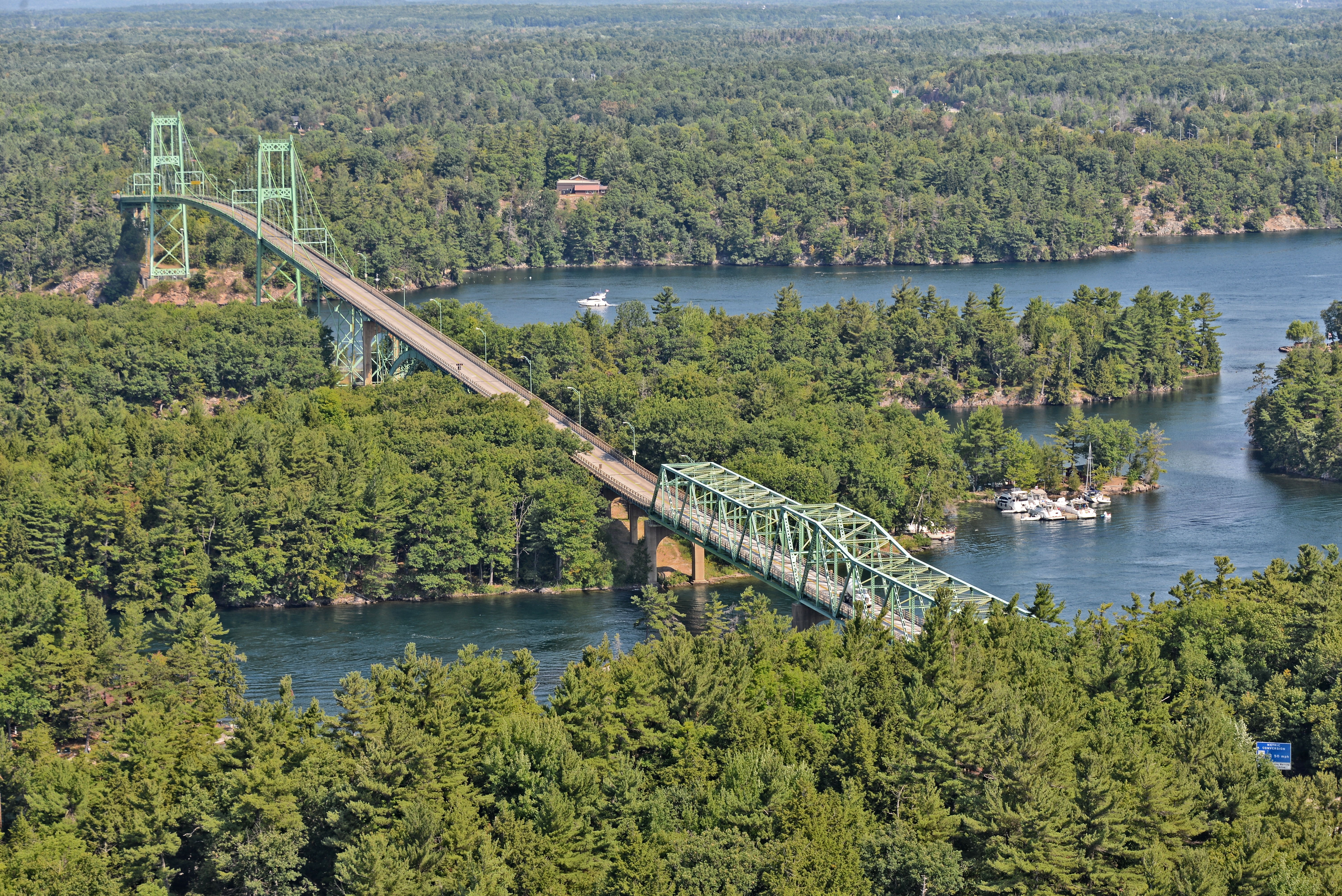
This week in civil engineering history: Groundbreaking ceremonies are held at Collins Landing, New York, for the Thousand Islands International Bridge connecting New York and the province of Ontario, Canada, April 30, 1937.
With the advent of automobiles during the early 20th century, the Good Roads Movement advocated and fostered the growth of roads and highways as critical to economic and social development and inextricably linked to prosperity. By the 1920s, concepts were proposed for a link between the United States and Canada over the Saint Lawrence River, east of Lake Ontario. Connecting central New York state with greater Ottawa, the Thousand Islands Bridge would be, at the time of its construction, the only land crossing between New York and Ontario east of Niagara Falls and the only border crossing of the St. Lawrence west of Montreal.
Early proponents of the bridge struggled to garner government approval and funding for the project. During the early planning years, many described the bridge as going “from nowhere to nowhere.” By 1928, a motion was presented in the New York legislature to form a bridge corporation but without a Canadian partner, a similar bill in Canada failed. Despite considerable local support, the Canadian government did not consider bridge construction a public-works project. With the 1931 formation of the Thousand Islands Bridge Company, private financing was secured, and engineering of the bridge began in 1933. Construction commenced with a groundbreaking ceremony held on April 30, 1937. The bridge opened 16 months later, Aug. 13, 1938, dedicated by President Franklin D. Roosevelt and Prime Minister Mackenzie King.
The 8.5-mile Thousand Islands International Bridge system is actually a series of five bridges spanning the Saint Lawrence from south to north: United States mainland to Wellesley Island (main span); Wellesley Island to Hill Island (international crossing); Hill Island to Constance Island; Constance Island to Georgina Island; and Georgina Island to the Canadian mainland. The bridges' southern end connects with Interstate 81, and the northern end connects with Highway 401. Upon opening, annual traffic was approximately 150,000 vehicles. Today, annual crossings exceed 2 million vehicles.
Reuben Hull, P.E., PMP, M.ASCE, is civil regional manager for LaBella Associates in Albany, New York, and a self-made historian who has penned numerous articles on civil engineering history. An active ASCE member, Hull is a corresponding member and former chair of the History and Heritage Committee, serves as vice president of the Mohawk-Hudson Section, served as president of the New Hampshire Section, 1999-2000, and was named New Hampshire Young Engineer of the Year in 1997.
Follow his daily Civil Engineering Almanac series on Twitter: @ThisDayInCEHist.



